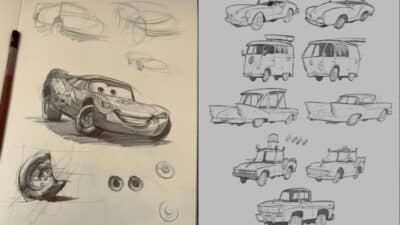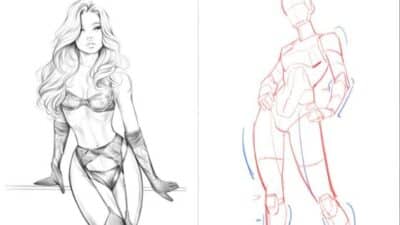Gouache is a fun and flexible painting medium that offers bright, bold colors and smooth, opaque layers. Artists of all levels enjoy using gouache because it works well for many styles, from simple shapes to detailed scenes. The best art ideas with gouache focus on exploring its ability to create rich textures, vibrant tones, and soft blends.
Many people use gouache for landscapes, portraits, and even abstract designs. Its quick-drying nature lets artists build layers easily and try new techniques without much wait. This makes it perfect for experimenting and finding new ways to express creativity.
Whether someone is a beginner or more experienced, gouache painting projects can be simple or complex. This mix of possibilities means there is always something new and exciting to paint with gouache.
Getting Started With Gouache
Starting with gouache requires a few key tools and understanding some basic techniques. Creating a comfortable workspace helps artists stay focused and enjoy the process. These steps ease beginners into the medium and build confidence quickly.
Essential Supplies for Gouache Art
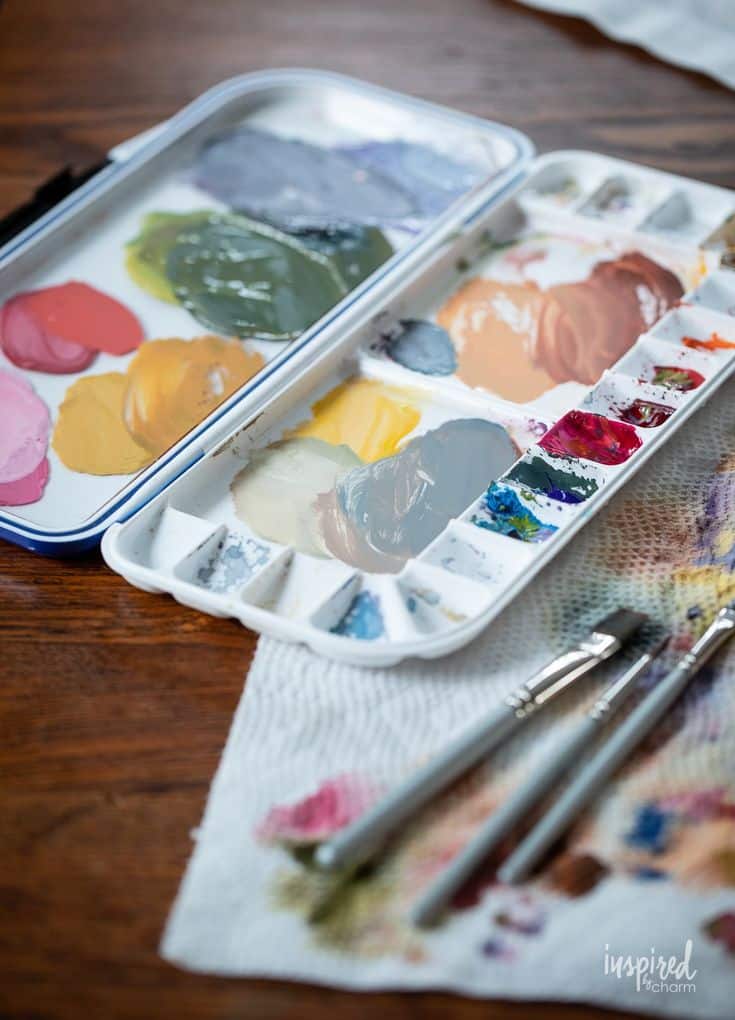
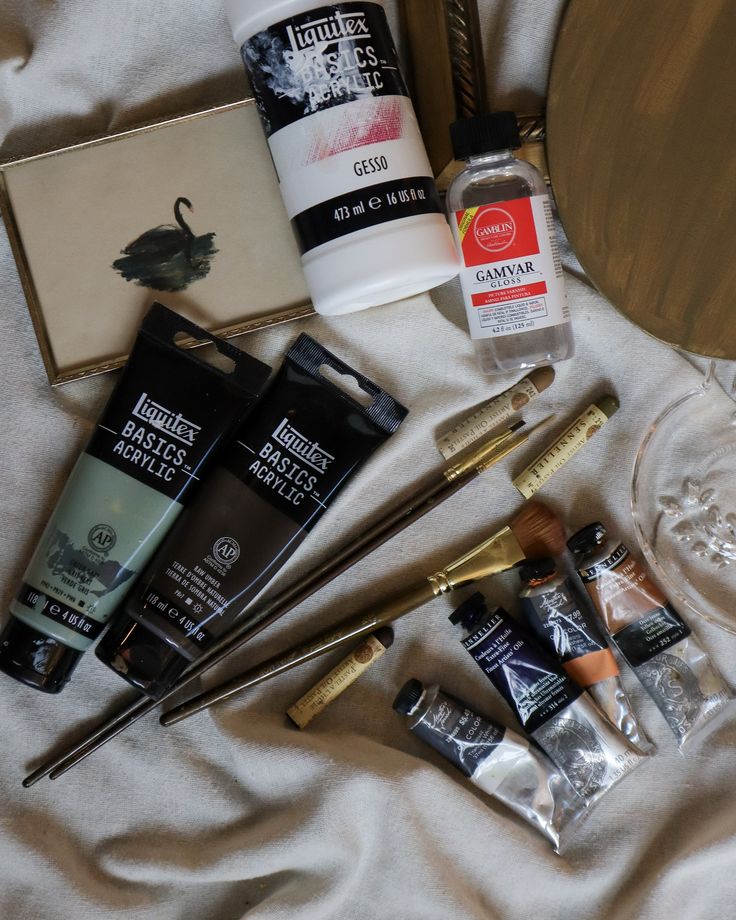
To work with gouache, the basic supplies include gouache paints, a set of brushes, a palette, and suitable paint surfaces.
Gouache paint comes in tubes or pans. Tubes often offer more paint and are easier to mix. Brushes with synthetic bristles work well since they hold paint without damaging the brush.
A palette can be plastic, ceramic, or even a simple plate for mixing colors. For surfaces, thick watercolor paper or mixed-media paper is best because it handles the water and paint layers without warping.
Other helpful items include a container for water, paper towels for blotting, and a pencil to sketch designs before painting.
Basic Techniques for Beginners
Beginners should learn how to layer, blend, and rework paints. Gouache is opaque, meaning it covers well, but it can also be thinned with water for lighter effects.
Start by painting simple shapes with thin layers. Once dry, more layers can be added without disturbing what’s underneath.
Blending works by mixing colors while they are still wet for smooth transitions. Artists can lift paint gently with a damp brush to lighten areas or fix mistakes, which makes gouache forgiving.
Experimenting with brush strokes and layering will help capture different textures and effects.
Setting Up Your Creative Space
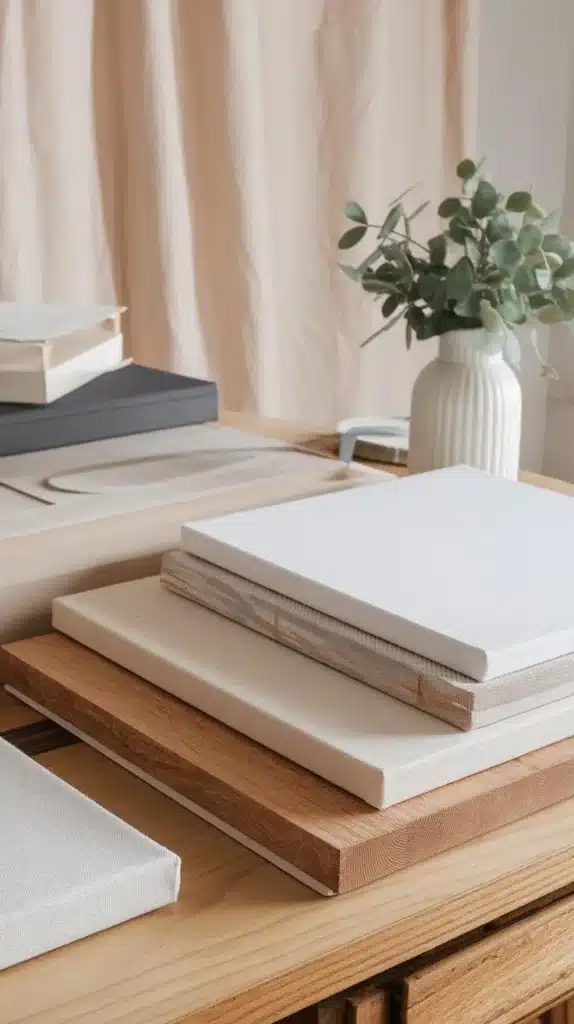
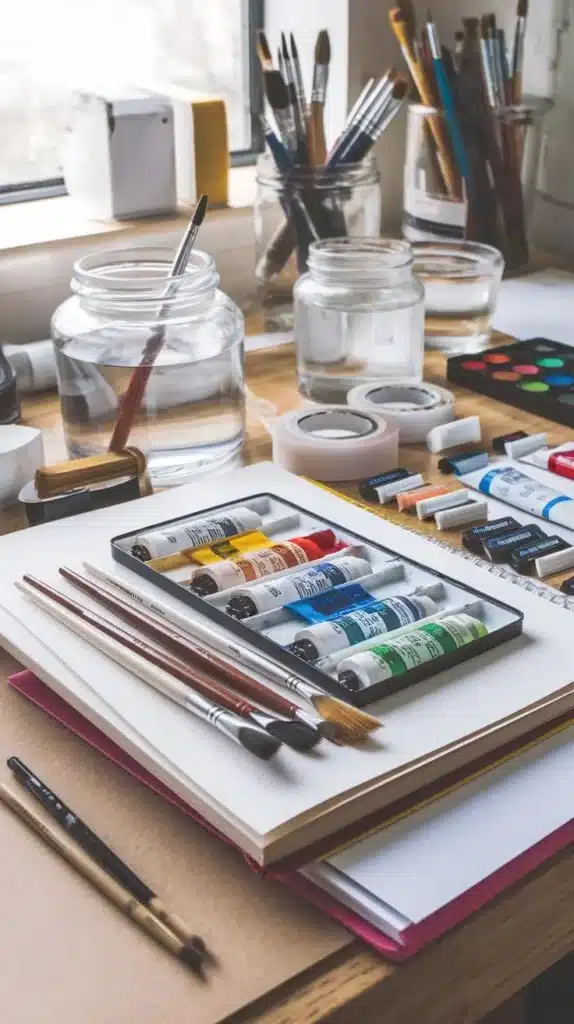
A well-organized space helps artists focus and enjoy painting. It should have good natural light or a bright desk lamp that doesn’t cast harsh shadows.
Clear a flat surface big enough for paper, paints, and brushes. Use a chair at the right height for comfort during long sessions.
Keep essential items like water cups, paper towels, and a palette close by to avoid interruptions. Some artists protect their desks with plastic or paper to prevent paint stains.
A space with minimal distractions helps maintain concentration and flow while painting.
Creative Gouache Painting Ideas
Gouache is perfect for creating bright and detailed artwork. Artists can use it to explore natural forms, bold shapes, and lively scenes. The paint’s thick texture works well for both fine details and smooth color layers. These ideas show how gouache brings different subjects to life with color and style.
Floral Designs and Botanicals
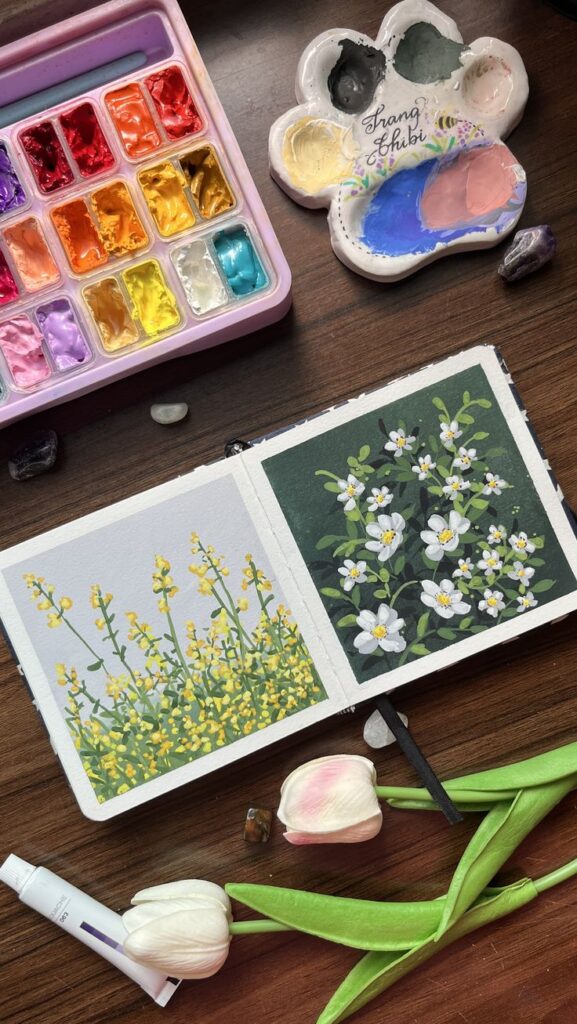
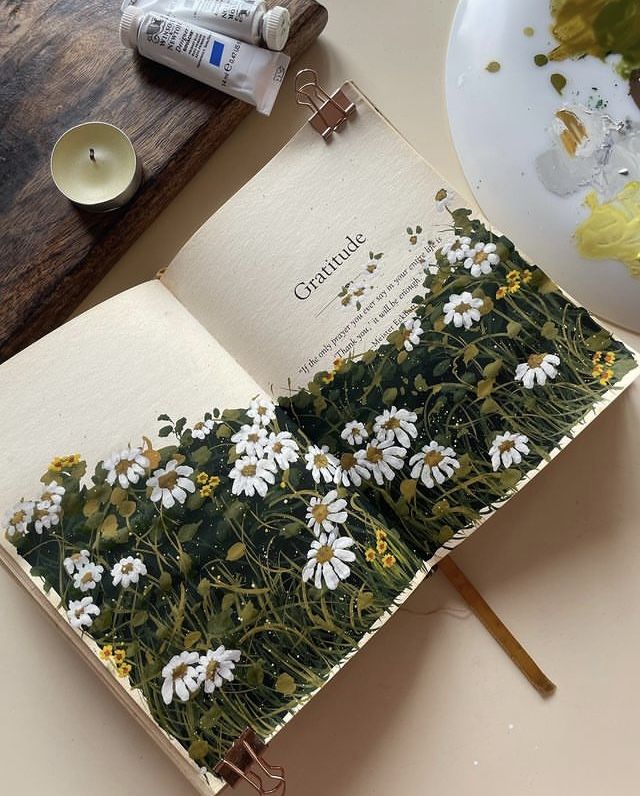
Painting flowers with gouache lets artists play with strong colors and soft shading. They can build layers to create petals that look both flat and textured. Small details, like veins or drops of water, come out sharp.
Using gouache, an artist can mix colors directly on the paper for natural blends. Leaves and stems get a lush look when painted with varying green tones. Botanical subjects invite careful study of shapes and patterns, perfect for capturing nature’s beauty.
Artists often choose simple flower shapes to practice control. More advanced painters add depth by layering shadows. Gouache dries quickly, so layering is easy but requires some planning.
Abstract Patterns and Shapes
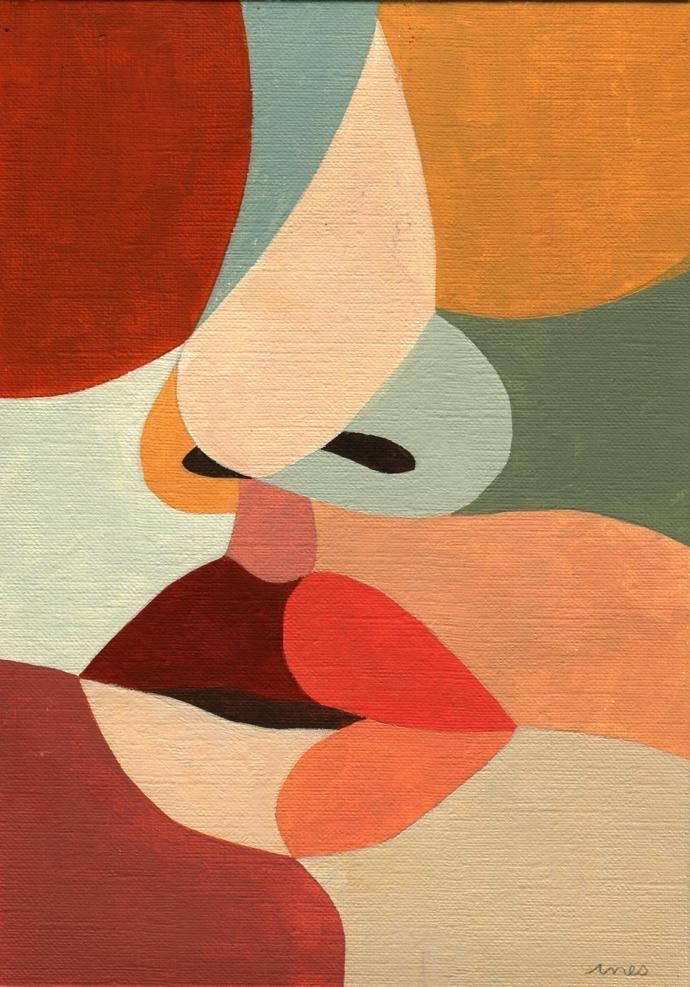

Abstract gouache paintings focus on color, form, and texture instead of real objects. Bold shapes and contrasting hues help make a strong visual impact. Artists can experiment with both sharp edges and soft, blended areas.
Using gouache’s opacity, artists can cover mistakes or change designs mid-way, encouraging free expression. Geometric shapes like circles and triangles work well for balanced compositions.
They might combine bright colors with muted tones for contrast. Mixing opaque layers with translucent washes creates interesting texture effects. Abstract work with gouache is a fun way to test color theory and brush control.
Landscapes and Cityscapes
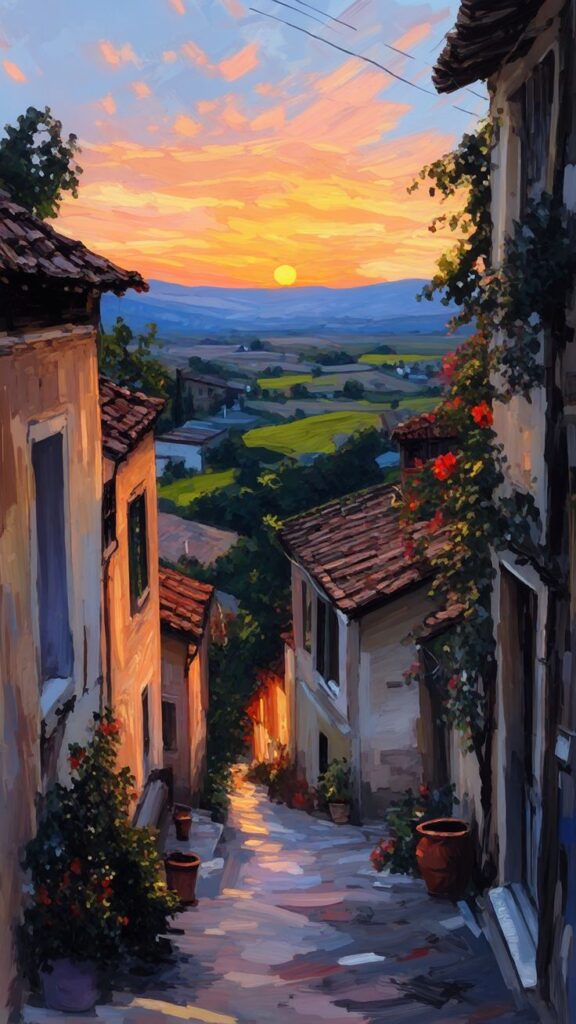
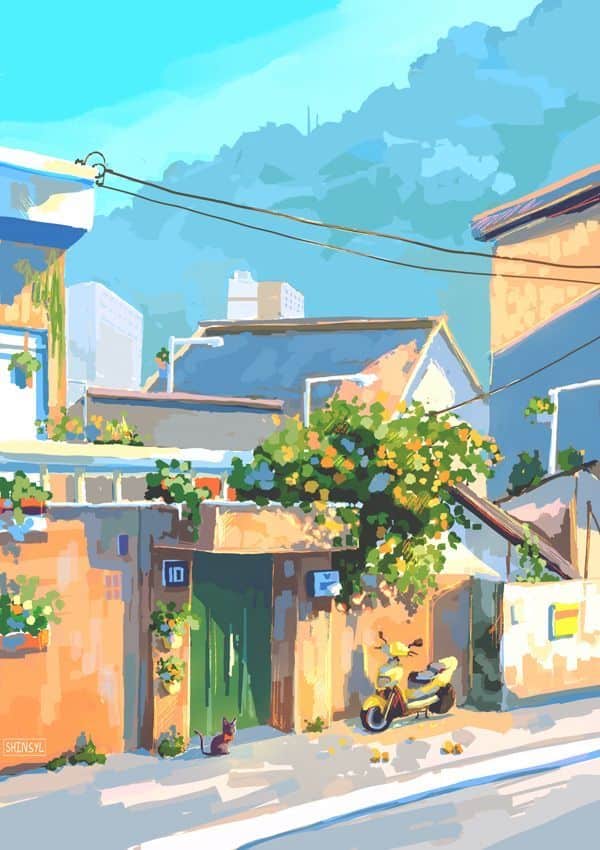
Gouache allows artists to paint rich details found in landscapes and city views. The paint’s smooth coverage helps create skies, trees, buildings, and water with vivid color and clear lines.
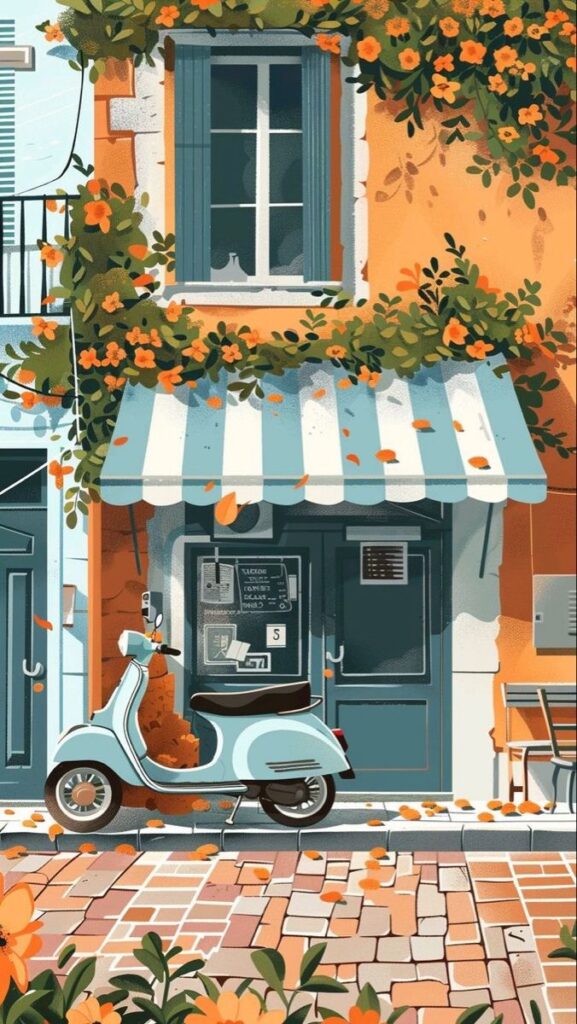
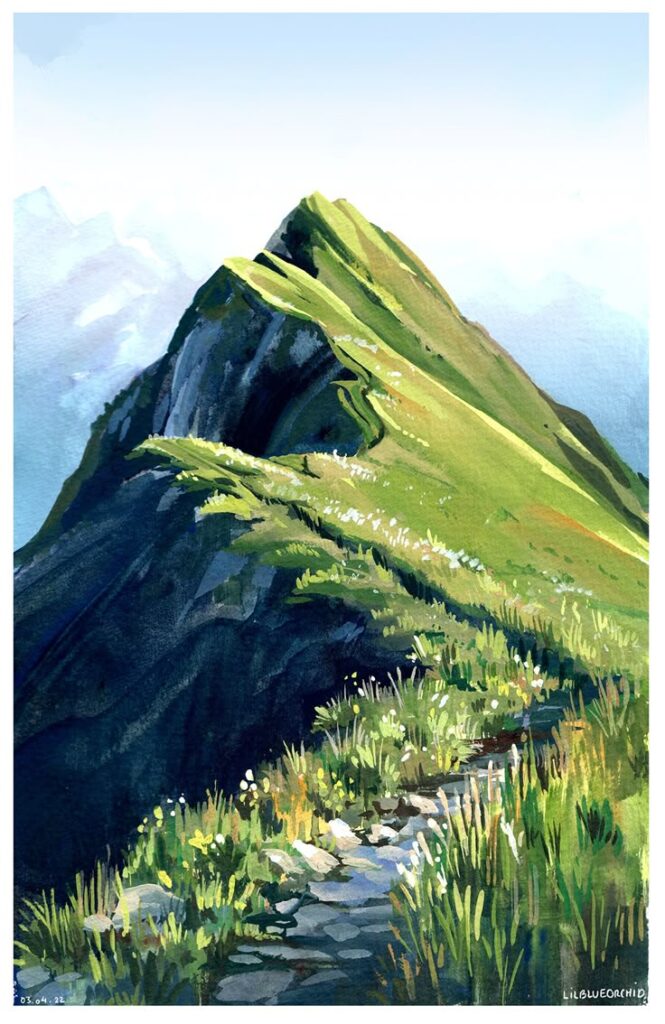
In landscapes, artists often layer muted tones under brighter colors to build depth. Cityscapes benefit from gouache’s ability to capture sharp edges and linear details of architecture.
The medium’s fast drying time lets painters add small highlights like reflections or windows. Gouache’s versatility supports both loose, expressive strokes and precise details in the same painting.
Whimsical Animal Illustrations

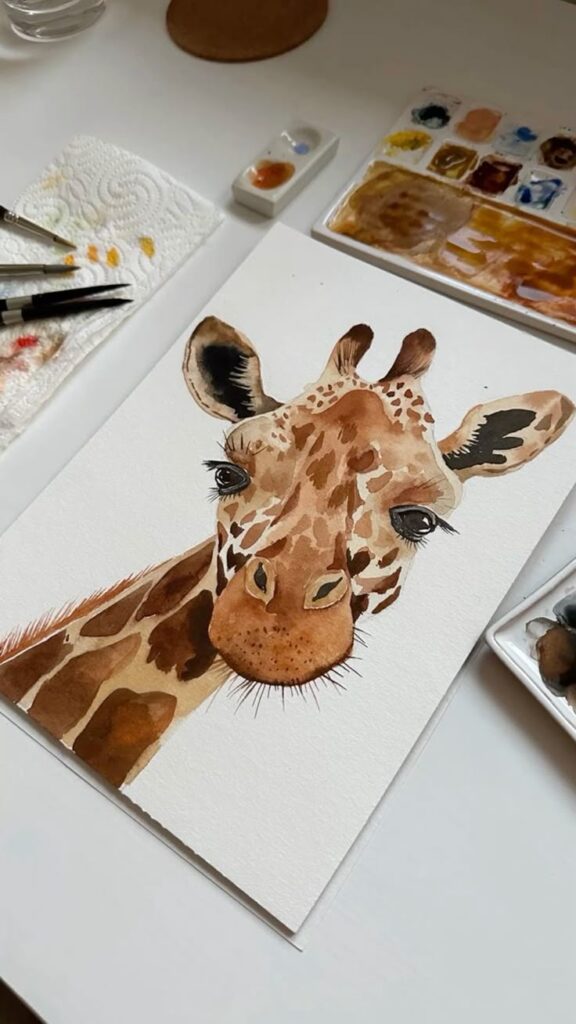
Creating animal paintings in gouache often brings a playful or imaginative style. Artists can emphasize fun traits like big eyes or unusual colors. Gouache’s bold colors make animals look lively and engaging.
Layering with gouache adds texture to fur, feathers, or scales. Small brushstrokes create fine details without blending too much. This helps keep shapes defined and clear.
Artists also use gouache to mix unexpected colors, giving animals a magical feel. Simple shapes and bright backgrounds make these illustrations great for kids or beginner painters.
Advanced Gouache Art Projects
These projects push gouache painting beyond basics by adding new materials, building textures, and focusing on detailed subjects. The aim is to deepen skill and create more complex artworks through careful control and creativity.
Mixed Media Experimentation
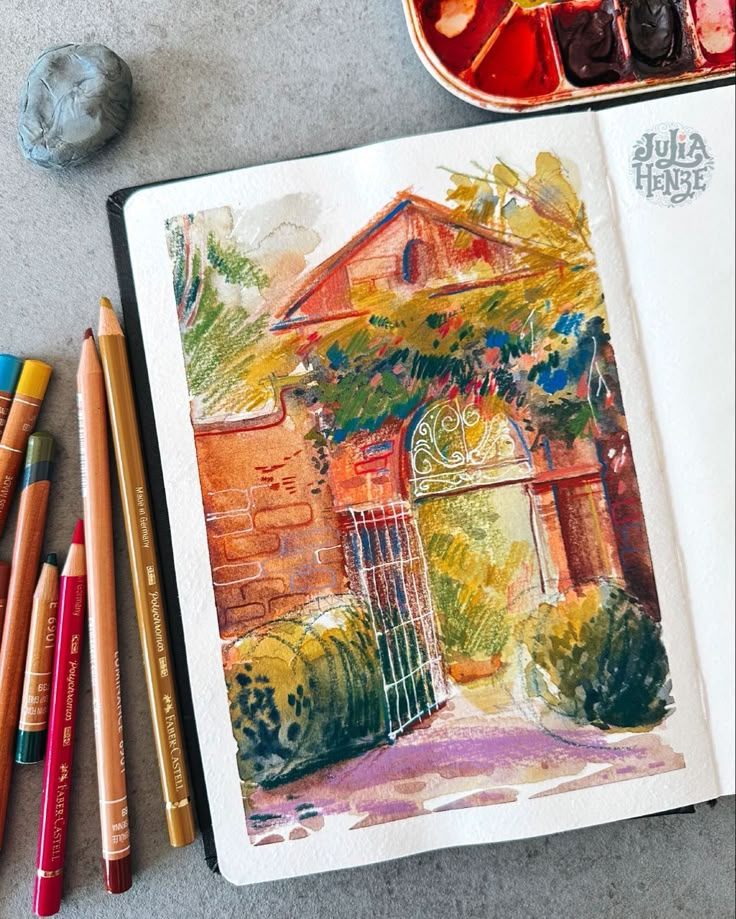

Using gouache with other materials can bring fresh effects and expand possibilities. Artists often combine gouache with ink, watercolor, or colored pencils to add detail and contrast. For example, ink lines on top of gouache can sharpen shapes and textures.
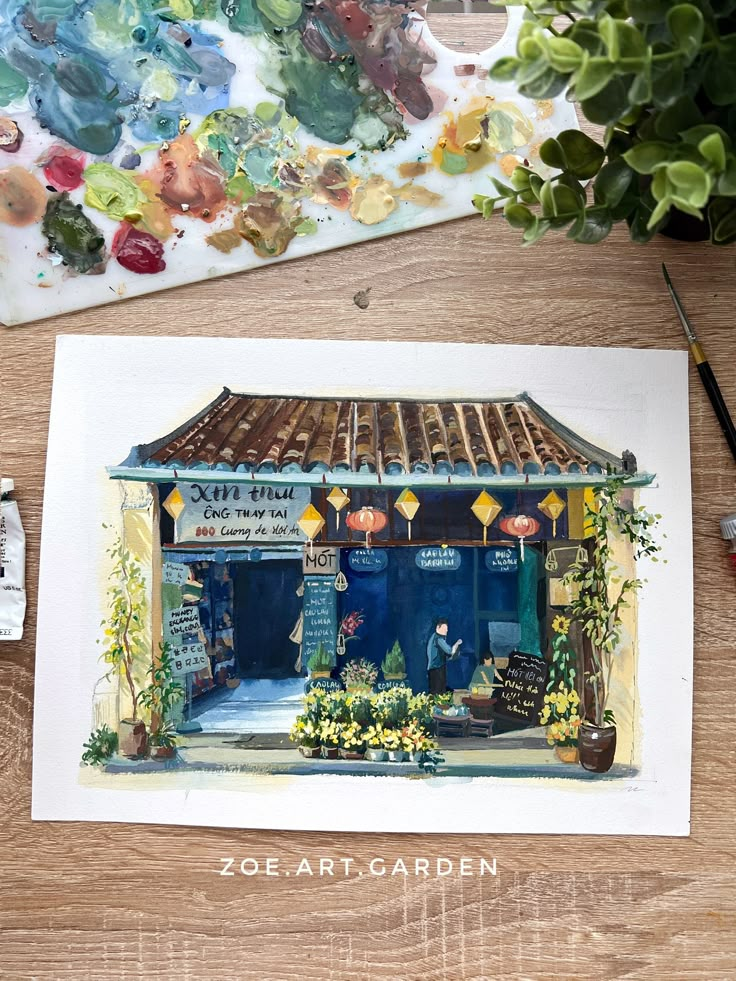
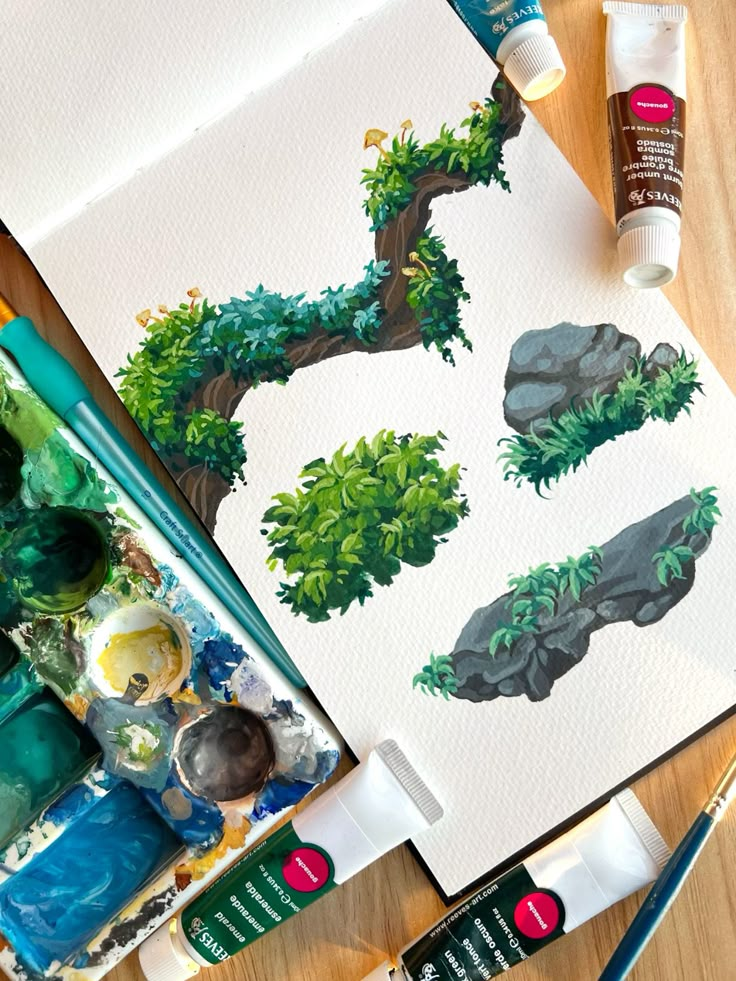
Paper choice matters here. Thick, textured paper holds layers well. Using different media requires testing how each reacts so colors don’t mix unexpectedly. Fixatives or varnishes may protect finished layers.
Mixed media allows artists to explore unusual styles by adding textures or contrasting soft gouache with harder lines. It encourages trying new ideas while maintaining gouache’s vibrant colors.
Layering and Texture Techniques
Gouache is great for layering because it dries quickly and stays opaque. Artists build depth by applying thin washes first, then adding thicker layers for highlights or shadows.
To create texture, one method is dry brushing where the paintbrush lightly drags paint, leaving a grainy effect. Another is scratching into semi-dry paint with tools to reveal bottom layers.
It is important to let each layer dry fully before the next. This avoids muddy colors. Layering can create the feel of rough surfaces like tree bark or fabric by combining smooth and textured strokes.
Portraits and Figures
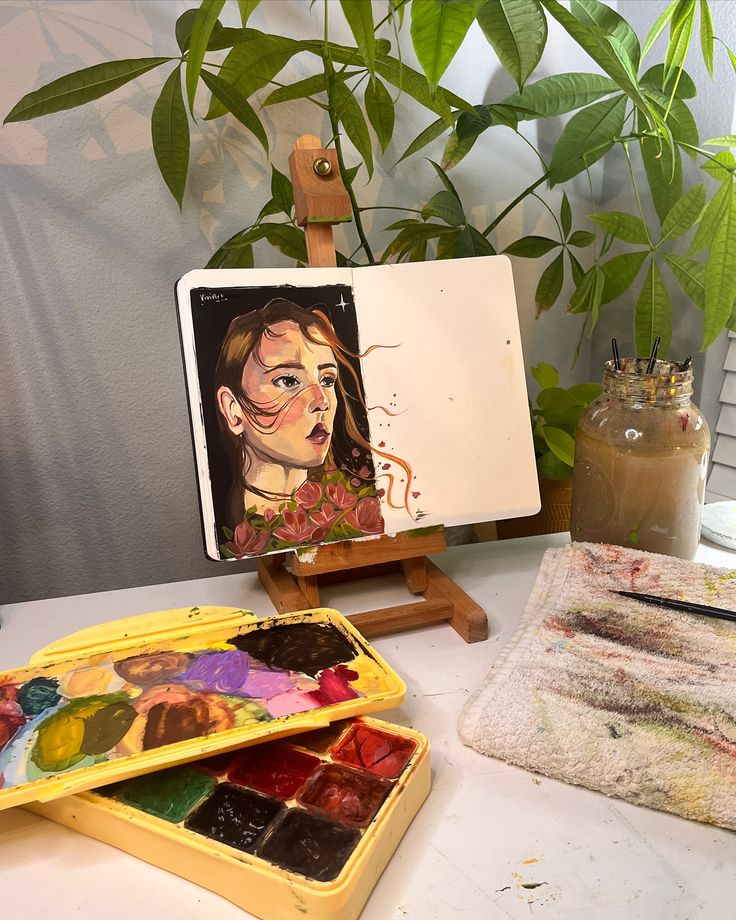
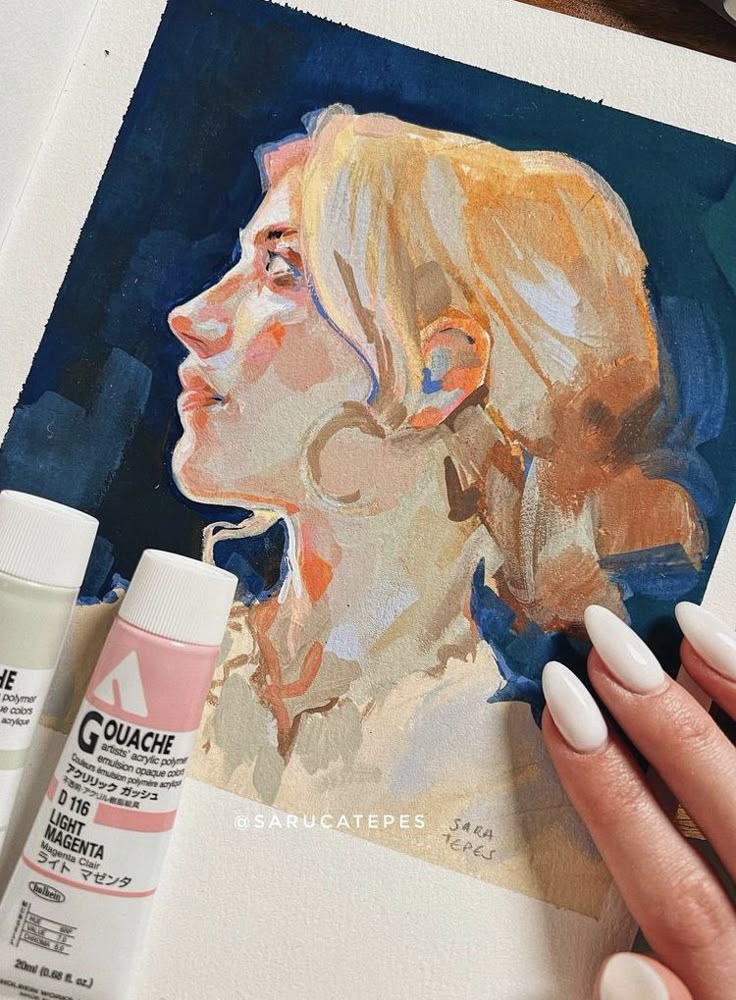
Painting people with gouache requires control of color and value to capture skin tones and expressions. Artists mix hues carefully using small amounts of white to keep colors realistic and not too flat.
Shadows and highlights give portraits depth. Gouache is good for this because it can be opaque or reworked by adding water. Lines and soft blending together build facial details such as eyes or hair.
For figures, gesture sketches guide pose and movement. Layers add muscle definition and clothing textures. Patience in layering and color matching is key to lifelike gouache portraits.
- 699shares
- Facebook0
- Pinterest699
- Twitter0
- Reddit0
